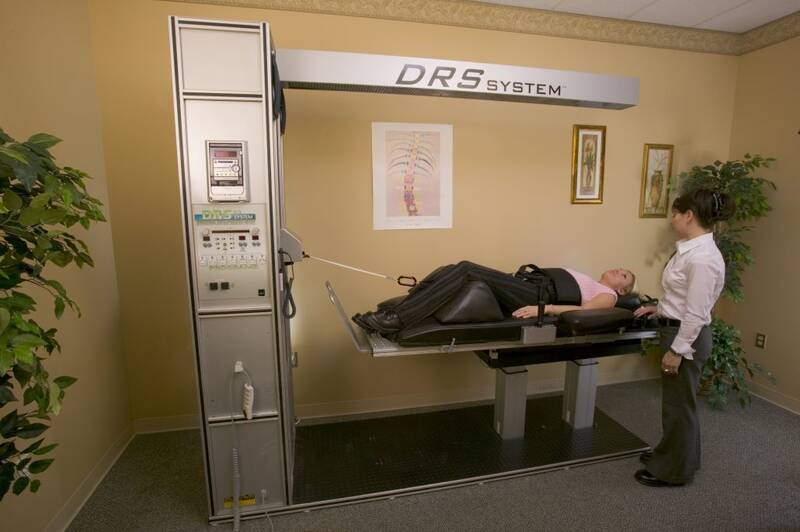Both massage therapy and physiotherapy play an important role in the health industry. What is the main difference between the two? We will fill you in on all the details you need to know.
While it is true that massage therapy and chiropractic massage both feel terrific; they are actually very different treatments. They overlap in some areas, with both types of treatments allowing a better range of motion in the joints, as well as being effective at aiding in the healing process.
Someone once said massage therapy and chiropractic therapy are like shoes and socks. Both cover the feet, both keep the feet warm, but, as anyone can tell you, while they are similar, they aren’t really the same.
However, there are points about chiropractic care that spa owners would rather that you didn’t find out.

Chiropractor vs. Massage Therapist: Difference Explained
1) The Difference in Training and Education
Depending on the state where the business is located, most massage therapists attend a massage therapy education program and complete between 330 to 500 hours of training. Therapists must then pass an exam and receive a license.
Some states require a certain number of hours be spent in continuing education before a license can be renewed, generally only 8 hours, and for a few states, only 8 hours every other year.
Chiropractors are doctors. This means they not only need to have a degree from a 4-year undergraduate school, but they must also complete another 4-year doctor of chiropractic program. Classes required for chiropractic work include chemistry, anatomy, physiology, and physics.
After receiving their degrees, depending on the state a chiropractor will work in, they must then take the NBC (National Board of Chiropractic Examiners) exam.
This is a very large, 4 part exam which covers:
- Basic Science, including spinal anatomy, chemistry, and physiology.
- Clinical subjects, including diagnostic imaging, neuromusculoskeletal diagnosis, as well as the principals of chiropractic care.
- Case history and Exams, including clinical labs and special studies, supportive techniques, and diagnosis.
- Practical Exam, including x-ay interpretation, chiropractic technique, and case management skills.
Besides the above requirements, each state also has its own requirements, which may include a criminal background check, a list of references, a licensing fee, and a state-level exam.
The difference in education and training alone makes it quite clear that a chiropractor has a more thorough understanding of the body and many more hours of training. Anchorage and Juneau patients can take advantage of our free 1-hour chiropractic massage therapy certificate.
Many massage therapists are expected to deal with both body and spirit. For the most part, a spa massage is focused on relaxation and relieving both physical and mental stress. Candles, calming music, dim lights, and incense are often part of the experience.
Chiropractors work in a more clinical setting. The focus of a chiropractic doctor is more on treating the spine, joints, and entire musculoskeletal system, including bones, muscles, tendons, and ligaments, rather than only soft tissue.
Chiropractors use x-rays, prescribe nutritional advice, and sometimes offer heat therapy, massage, physical therapy, and refer patients to other medical facilities or doctors when necessary.

Unlike massage therapy, chiropractic care is unique in that its focus is not on the soft tissue, but on the optimization of the central nervous system and spine.
The nervous system controls every single function of the body, from respiration to walking. When the spine is aligned correctly, the nervous system can function properly.
Sometimes, sore muscles come from overexertion or from exercise after lack of use. However, pain is often a sign that the spine is out of adjustment and needs to be realigned. Only your chiropractor will know what the underlying problem is and how to repair it.
3) The Focus
The typical spa massage involves the use of the classic Swedish massage. As we mentioned earlier, it is not uncommon to find scented candles, a dimly lit room, and pleasing background music. Your therapist will use gentle to medium pressure, with the focus of the session being relaxation.
Most spas offer add-on treatments, such as sugar scrubs, pedicure and foot treatments, mud baths, or facials.
While a massage therapist can loosen up tight muscles caused by overwork or stress, their intent is to find ways to relax body and mind, while pleasing the senses and offering what is probably some much-needed downtime or pampering.
A first-time visit to a chiropractor’s office will include spending time describing the issue(s) you wish to discuss, which, for most people, are related to pain that doesn’t come from overworked muscles. Although chiropractic massage can offer relaxation, the focus here is to address chronic pain and/or health issues.
Once the problem is identified, the chiropractor seeks to find the heart of the problem. Rather than providing temporary relief, the doctor looks for ways to address the issue behind the pain or problem. A combination of treatments, including adjustments, stretching, and massage, will be used.
4) The Types of Massage
If you have ever gone to your local day spa and been confused by all the different types of massage they list, you aren’t alone. A typical list includes:
✓ Swedish massage – this is the most common type of massage, designed for relaxation
✓ Hot Stone massage – being massaged by round, hot stones is perfect for releasing very tense muscles
✓ Deep Tissue massage – this massage does exactly what it sounds like. This is good for treating stiff, painful spots that don’t respond well to traditional massage
✓ Shiatsu massage – an age-old technique from Japan that uses gentle stretching and finger pressure to reestablish proper energy flow.
✓ Thai massage – this is an invigorating, rather than relaxing massage that involves the entire body. This type of massage is sometimes called the Lazy Person’s Yoga. It improves energy and flexibility.
✓ Sports massage – for those who are extremely active, such as athletes, exercise instructors, or weekend sports lovers, this program stretches and massages muscles to improve blood flow.
You might wonder which would be best for you. You can ask your masseuse or the spa owner, but you always have to wonder in the back of your mind if they are choosing the correct therapy for you, or simply what they want to sell that week.
The massage therapist at the spa knows nothing about your medical history, your health problems or problems unless you tell them.
However, even if you were to tell them your medical history, they don’t have the knowledge or training to know what to do with your information or what it means.
Not that spa massage doesn’t have its benefits because it absolutely does!
The chiropractor might do adjustments before or after your massage. Types of massage that your doctor might perform are:
✓ Trigger Point – This is designed to release muscles that have spasms and are locked in place, creating pain and often causing health issues such as headaches or insomnia
✓ Deep Tissue – This massage uses deep, slow movements to target muscles with very concentrated pressure.
✓ Swedish Massage – When muscles in the neck or back are tense, they often pull joints out of place, causing pain. The typical Swedish massage can relax muscles so adjustments can be made.
✓ Lymphatic Drain – A specialized type of massage that involves pushing the lymph nodes to help them drain, improving immune function and helps to eliminate lymphedema.
✓ Myofascial Release – Stimulating the stretch reflex in muscles while releasing contracted muscles, easing pain
Massage alone can often relieve pain and tight muscles, but if the pain continues to return, this is most likely due to subluxation. A masseuse at a spa cannot realign joints or the spine. Only a qualified chiropractor can do this!

5) The Cost and Insurance Coverage
There are also small things that can make a difference in whether you choose a spa massage or a chiropractic massage.
It is rare for insurance companies to cover spa massages. Although some companies allow for physical therapy, it is uncommon for the typical day spa to accept your insurance card.
There are some exceptions to the insurance rule when vehicle accidents are involved, but even then, vehicle insurance will cover chiropractic care and massage, but your favorite day spa? Probably not.
Spa massages can be costly, depending on the service and extras you choose, oh, and don’t forget the tip! Needless to say, there is no need to tip your chiropractor!
Chances are that your insurance covers at least a few visits per year for chiropractic care where you can get a massage and an adjustment in one office visit.
It’s true that a spa massage environment is super relaxing and a beautiful experience. You won’t get that type of ambiance at the chiropractor’s office, which is more of a medical environment.
Generally, patients who receive chiropractic care, in combination with massage therapies, tend to heal faster than those who receive chiropractic care or massage therapy alone.
The Benefits of Blending Massage with Chiropractic Care (Chiropractic Massage Therapy)
Some of the beneficial aspects of mixing chiropractic adjustments with massage therapy are:
✓Improved blood flow to the muscles for faster healing
✓Improved mental and emotional state
✓Lower levels of stress
✓Improved immune system response
✓Reduced pain levels
✓Longer lasting pain relief
✓Fuller range of movement
✓Less fatigue
✓Reduced appearance of scar tissue
The truth is that, most of us, we have become accustomed to the “quick fix”. We look to an over-the-counter pain pill to stop a headache, we want an acid reducer to stop heartburn instantly, we expect the chiropractor to fix our stiff neck and a massage to fix those sore muscles.
It would be nice if our bodies worked that way. Most physical ailments are multi-faceted in nature and require interconnected therapies to make our bodies work accordingly.
Massage therapy and chiropractic adjustments go hand in hand, each complimenting the other. When muscles are loose, adjustments tend to last longer and pain is reduced.
History of Massage and Chiropractors
One thing experts will agree on is that both chiropractic care and massage therapy have their roots in the ancient culture of the Chinese.
Massage therapy has been found in writings and hand drawings dating back to at least 481 BC. It can also be found in ancient Egypt, dating back to about 2330 BC!
Similar to massage therapy, chiropractic care also dates back to the venerable cultures of Greece, and China. Hippocrates, the Greek physician whom many refer to as the Father of Medicine, wrote that “Knowledge of the spine is requisite for many diseases”.
Although there are many types of massage therapy, the basic idea is to manipulate the soft tissues to offer improved flexibility, circulation, relaxation, and encourage the healing of damaged tissues.
Most people can see that massage therapy and chiropractic massage share a common philosophy and practice. These two therapies use hands-on treatments as a natural means of encouraging the body’s own innate ability to restore and heal itself.
Both types of treatments are designed to alleviate pain and are part of an overall health and wellness program.
Chiropractic massage and spa massage offer several benefits, including:
- Improved joint mobility
- An improved range of motion
- Reduced pain
- Improved posture
So what are the differences between the two therapies? What are spa owners and massage therapists hoping you don’t find out?
A Word about Physical Therapy
Physical therapy is often recommended by medical doctors after surgery or an accident. Chiropractic care and physical therapy is another combination that work well together and should not be considered an either/or decision.
Physical therapists restore range of movement and help patients regain mobility, much like chiropractors do. They often teach patients exercises to help strengthen weak or damaged muscles as well as utilize tools such as ice therapy and hydrotherapy.
If your doctor has prescribed sessions with a physical therapist, be sure to tell your chiropractor you are seeing one so they can work together to help make sure you receive the best treatment.
The Bottom Line
If what you are looking for is simple relaxation, stress relief, and enjoyment of a quiet time of luxury, spa massages can do all that and more. However, if you are experiencing pain, a health issue, or if you have questions as to which type of therapy would be best for your unique situation, we encourage you to visit us at Better Health Chiropractic Juneau.
Keep in mind that a chiropractor is a doctor, and a highly trained health care professional, who can guide you in seeking the best possible care.









